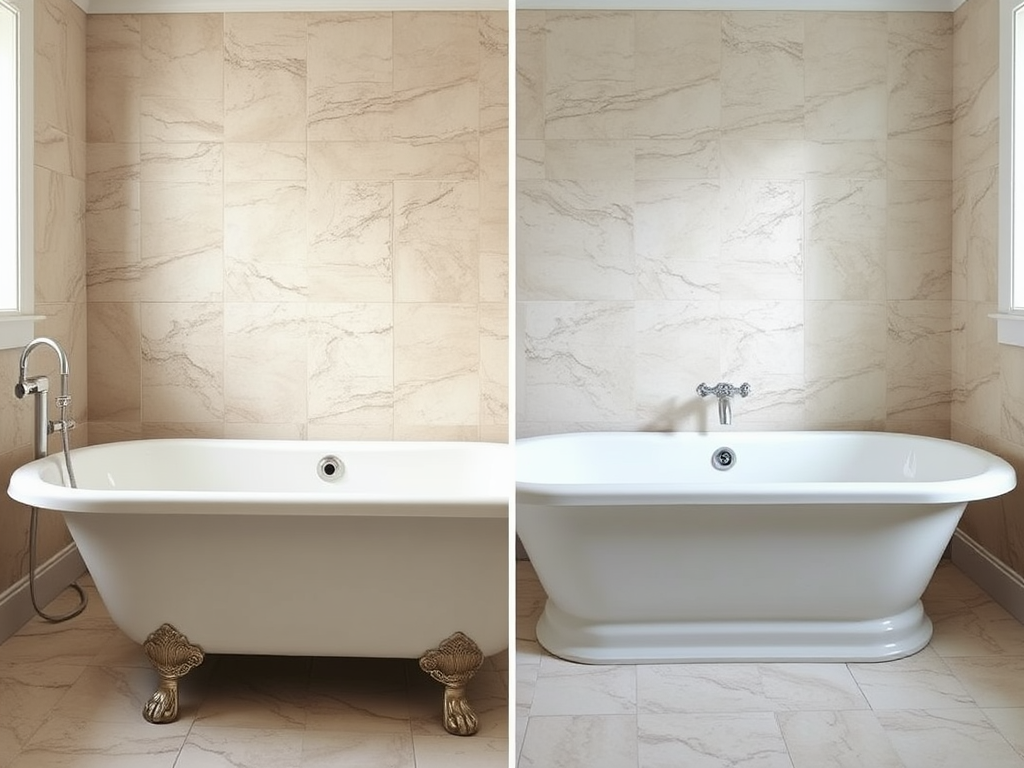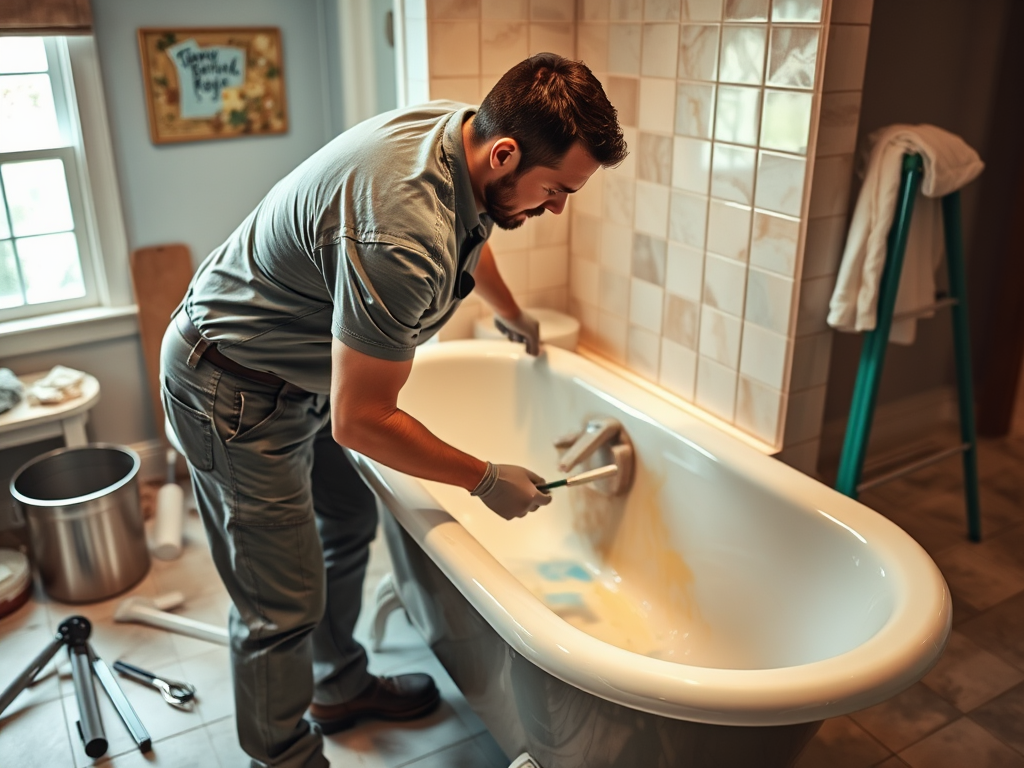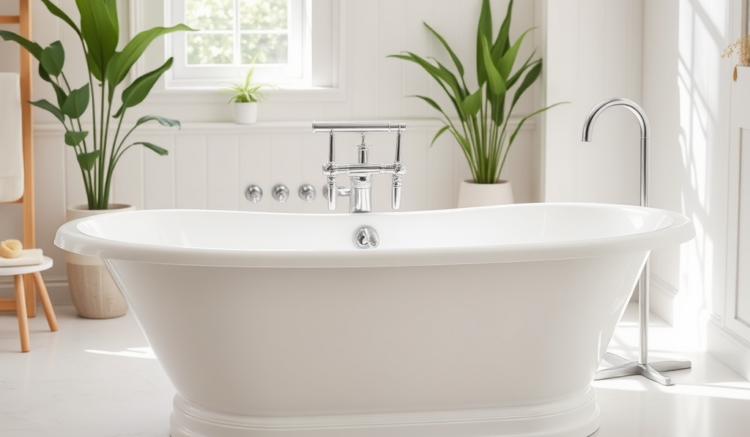When considering a bathroom makeover, homeowners often find themselves in a conundrum regarding the best way to refresh their bathtubs. With many different terminologies like “refinishing” and “reglazing” popping up in renovation discussions, it can become quite overwhelming. Understanding the nuances of these processes not only helps in selecting the most suitable option but also ensures you invest wisely in your home. Both refinishing and reglazing can breathe new life into a worn-out bathtub, yet they do so in markedly different ways. This article will demystify these terms and help you make an informed decision for your bathroom upgrade. Let’s dive deeper into the world of bathtub restoration and their contrasting features.
What is Bathtub Refinishing?

Bathtub refinishing is all about revitalizing an old tub to make it aesthetically pleasing without undergoing a complete replacement. This process can dramatically enhance the overall look of your bathroom while offering the benefit of reduced costs. Refinishing entails the application of a new resin coating that can protect the surface while giving it a fresh color or shine. Many homeowners choose refinishing due to its ability to save time, money, and waste when compared to purchasing a brand-new bathtub. Furthermore, this technique can extend the life of your existing tub, making it an appealing choice for those who want to achieve a modern look without large-scale renovations.
- Refinishing gives an old tub a brand-new appearance.
- This process can typically be completed in just a few hours.
- It is environmentally friendly as it avoids landfill waste.
What is Bathtub Reglazing?

On the other hand, reglazing involves applying a fresh glaze layer over the existing surface. While many think it is synonymous with refinishing, the processes differ in material and method. Reglazing focuses on creating a glossy finish that closely resembles a new porcelain tub. The appeal of reglazing lies in its quick turnaround, often taking only a few hours, ideal for busy families or individuals needing swift bathroom updates. It’s important to note that while reglazing does yield impressive results, it may come with certain limitations regarding durability and lifespan when compared to refinishing.
Opting for reglazing has its distinct characteristics that homeowners should consider. The surface preparation methods and materials differ, allowing for better adhesion of the glaze. However, improper application can lead to a finish that is prone to chipping or peeling over time if not handled by a professional. Here are some notable features:
- Costs generally lower than refinishing.
- Quick application time and immediate visual results.
- Wide array of color options available for customization.
| Factor | Refinishing | Reglazing |
|---|---|---|
| Durability | Long-lasting, up to 15 years with care | Shorter lifespan, typically 5-7 years |
| Cost | Higher initial cost | More affordable option |
| Surface Finish | Resin-based, customizable | Glossy glaze, attractive finish |
| Application Time | Approximately 4-6 hours | Often takes less than 4 hours |
Key Differences Between Refinishing and Reglazing
Understanding key differences will better inform your decision-making process. While both options aim to enhance the bathtub’s appearance, they also vary in crucial ways. Methodology involves different materials and preparation techniques, with refinishing often requiring more extensive surface preparation. Furthermore, durability plays a significant role in your choice; refinished tubs generally outlast reglazed ones, which may necessitate more frequent touch-ups or replacements.
- Methodology: Resin vs. Glaze – the materials used differ widely.
- Surface Preparation: Refinishing requires sanding and thorough cleaning, while reglazing involves less prep work.
- Durability and Maintenance: A refinished tub may withstand more wear and tear compared to a reglazed one.
Cost Considerations
Both refinishing and reglazing come with their own costs, and understanding these can prevent surprises later. Reglazing often proves to be the budget-friendly option, but a lesser investment might mean more upkeep down the line. Alternatively, while refinishing carries a higher immediate cost, the increased longevity might offer better value over time. Homeowners must consider their budget not only for the initial expense but also for potential future maintenance and repairs.
Conclusion
Deciding between refinishing and reglazing your bathtub requires careful thought and consideration. With the variety of materials, techniques, and costs involved, it’s essential to weigh your options against your specific needs and budget. While refinishing presents a durable and long-lasting solution, reglazing provides a more immediate refresh at a lower price point. Ultimately, understanding these methods allows homeowners to select the best choice for enhancing bathroom functionality and aesthetics. The information presented here aims to assist you in making the most informed decision possible.
Frequently Asked Questions
- What type of tub is best for refinishing?
Acrylic and cast iron tubs are commonly refinished. - How long does the refinishing process take?
Typically, refinishing takes about 4 to 6 hours, plus additional curing time. - Is reglazing suitable for all bathtub materials?
Yes, reglazing can be applied to most bathtub surfaces, including porcelain, fiberglass, and acrylic. - Can I use my tub immediately after reglazing?
It’s advisable to wait at least 24 hours before using the tub after reglazing. - What is the average lifespan of a refinished bathtub?
A refinished bathtub can last anywhere from 10 to 15 years with proper care.
